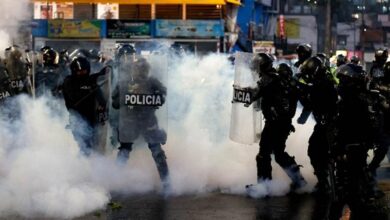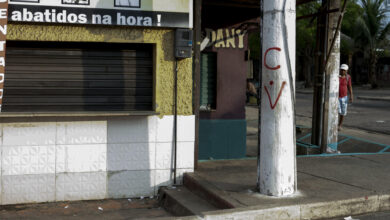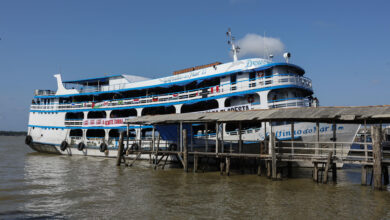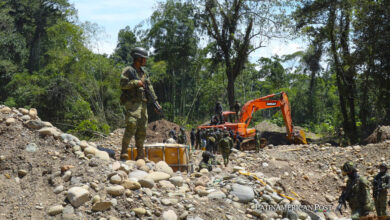Ancestral Land vs. a Prison State: The Huancavilca Commune’s Battle in Coastal Ecuador
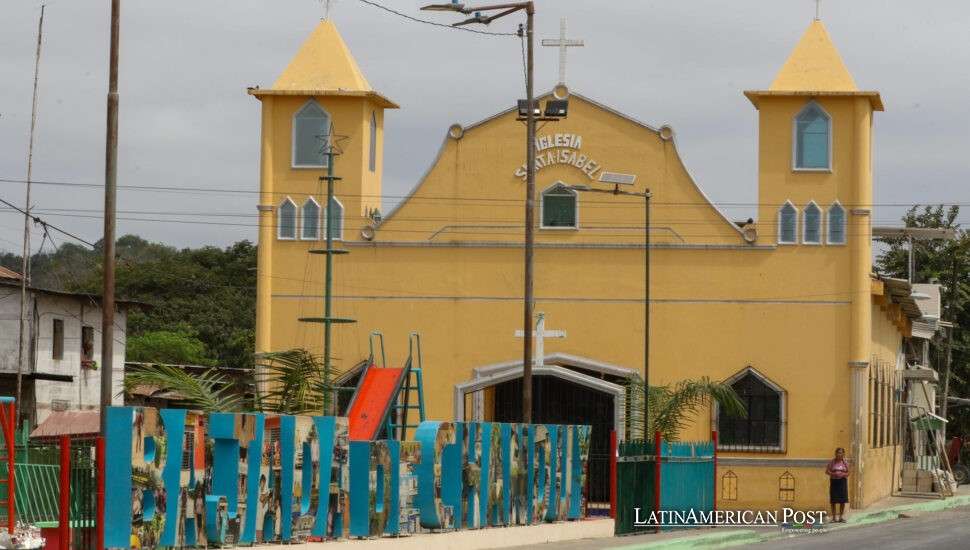
In the lowlands of Ecuador’s Santa Elena province, where the air smells of salt and dry forest resin, the Huancavilca Indigenous commune says the government is building a fortress on their past—a maximum-security prison rising on ancestral soil. What began as a local dispute over boundaries has become something larger: a test of how far a country can go in the name of security before erasing the people who were there first.
Ancestral Titles Against a Flagship Prison
A few dusty kilometers from Bajada de Chanduy, workers in hard hats pour concrete under the searing coastal sun. The site, the government says, will soon house the “Cárcel del Encuentro,” the showcase prison of President Daniel Noboa’s war on organized crime. But to those who live nearby, the project stands as a monument to exclusion.
“We have exhausted all avenues here in the country, so we’re taking our case to international bodies,” said Carola Cabrera, a Huancavilca woman from Bajada de Chanduy, in an interview with EFE. She argues the state ignored the commune’s ancestral titles and skipped the legally required consultation with Indigenous residents. “They’ve chosen to ignore us because they insist the site doesn’t belong to Bajada de Chanduy,” she said. “Regardless of what their paperwork says—which we don’t recognize—our ancestral titles place us there, and the commune extends a kilometer beyond that prison under construction.”
For the Huancavilca, the issue runs deeper than geography. Under Ecuador’s constitution and international law, any project on Indigenous territory requires free, prior, and informed consultation. Instead, bulldozers came first. Interior Minister John Reimberg has announced the prison will be completed by late November. Each public update lands like a blow, proof to locals that decisions were made without them—and that their land can be overwritten by decree.
From Court Denials to the Inter-American Route
The commune has already tested every legal path at home. Complaints filed in provincial courts and constitutional appeals in Quito have all failed. “There is defenselessness because the justice system has turned its back on ancestral communes,” said Fernando Bastias, a lawyer with the Permanent Committee for the Defense of Human Rights (CDH) in Guayaquil, which is representing the case.
He told EFE that the claims rest on collective rights protected by the American Convention on Human Rights. “There is already a consummated violation because a maximum-security prison was built on their territories,” Bastias said. “The right to community property—recognized by the Inter-American Convention—is violated, and so are the rights to self-determination and identity.”
Having reached the end of Ecuador’s judicial road, the community now turns outward—to the Inter-American Commission on Human Rights (IACHR)—seeking precautionary measures to halt environmental damage and, ultimately, a ruling that could set a precedent. “We’ve decided to activate the Inter-American System to present this as an emblematic case,” Bastias explained. “If the Commission rules in our favor, it could strengthen recognition of collective rights for communes across Ecuador.”
In parallel, residents plan one last national move: a petition demanding a halt to any discharge that could contaminate their river while damage assessments proceed. But for many in Bajada de Chanduy, faith in domestic remedies has already eroded, much like the river they depend on.
Water Turning Foul and a Forest in Dispute
Follow that river—the Las Negras—and the story darkens. Where children once swam and farmers drew clear water for crops, locals now point to a greenish film and an acrid smell. Cabrera believes the contamination comes from a pipe connected to the prison site. “They’re killing us,” she told EFE, her voice breaking. “It was a river where crystal-clear water ran. Now the water stinks because they’re dumping wastewater into it.”
Government agencies deny wrongdoing. The Environment Ministry insists that the area is neither protected land nor part of Ecuador’s National Forest Heritage, and that all environmental regulations have been complied with. But the commune’s members argue that designations on paper mean little if the forest itself is dying. Tropical dry forest—one of the region’s rarest ecosystems—surrounds the construction zone, and locals say it has already been stripped and compacted.
The fears go beyond pollution. “Once the prison starts operating, the relatives of these high-risk inmates will come to threaten the communes to take over our territories,” warned Donald Cabrera, another resident, in comments to EFE. “What the government seeks with this project is to displace the communities.”
Some families have stopped traveling after dark. Women fetch water in pairs. Farmers avoid the road that skirts the site. The feeling is of something irreversible—security for the nation traded for insecurity at home.
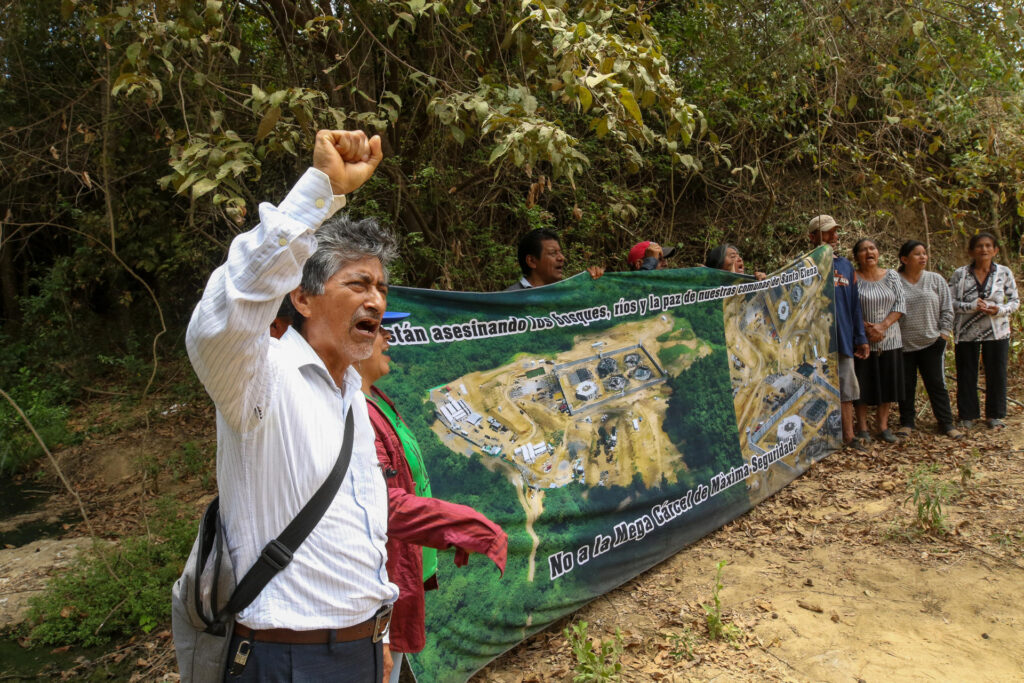
What Justice Looks Like After the Ribbon Cutting
The state calls the new prison essential—an answer to the gangs that have turned Ecuador’s coast into a battlefield. The Huancavilca call it a violation of rights—proof that when fear governs, consultation dies first. Courts have sided with construction, but the commune vows to keep fighting long after the ribbon is cut.
“Even if they open it, even if it starts operating, we will demand that they close it, that they repair the forest,” said Carola Cabrera to EFE. Her hope, improbable but clear, is to transform the structure itself. “If any infrastructure remains useful, let it be converted into a scientific center for conservation research and restoration of native forest ecosystems.”
It sounds utopian against the noise of trucks and cranes, yet it captures what’s at stake: who decides the destiny of a place. For now, the prison is rising fast; the petitions move slowly. Between those timelines, daily life continues—farmers tracing irrigation ditches along a polluted stream, children crossing wooden bridges to school, and elders remembering when that water still ran clear.
Also Read: Argentine Brizuela Defies the Rise of Reggaetón and Corridos with His “Espíritu Profundo” Rock
The Cárcel del Encuentro is meant to symbolize a state reclaiming control from crime. In Bajada de Chanduy, it symbolizes something else—a fight for belonging, for the right to be consulted, for the dignity of saying this land is ours. Whether the answer comes from Quito or from Washington, the Huancavilca have already declared what justice looks like: not another wall, but a river running clean again.

